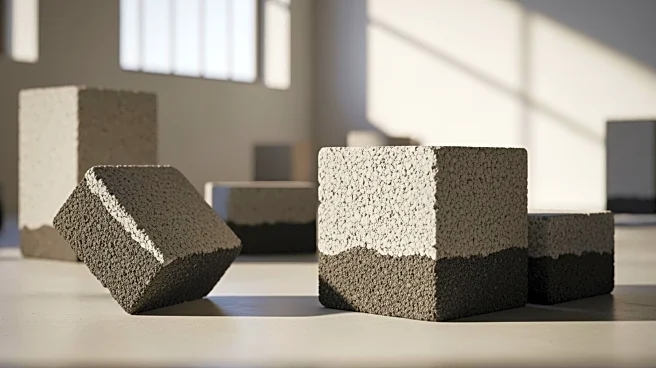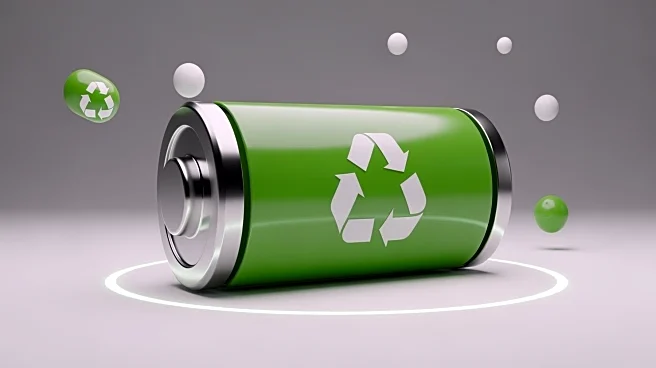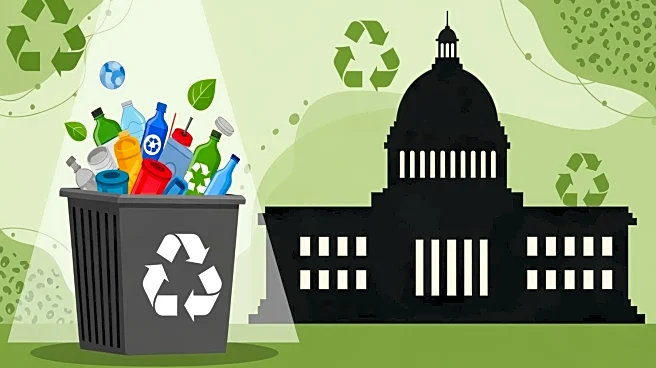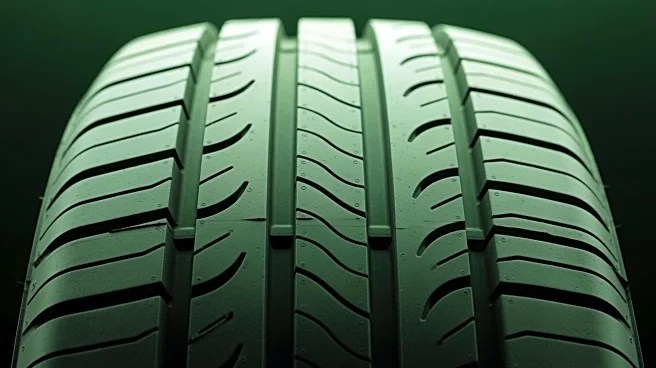What's Happening?
A recent study published in Scientific Reports has demonstrated that incorporating waste tire rubber and pumice into geopolymer concrete significantly enhances its impact resistance and sustainability.
The research focused on the mechanical and impact behavior of lightweight geopolymer concrete (GPC) using these materials. Pumice, known for its lightweight properties, was used to replace coarse aggregates, while waste tire rubber (WTR) was added to improve energy absorption and impact resistance. The study involved testing various combinations of pumice and WTR, revealing that optimal performance was achieved with 5% pumice and 10% WTR. This combination resulted in the highest impact resistance and minimal displacement, making it suitable for non-load-bearing applications. The findings suggest that these materials can be effectively used to create lighter, greener, and more resilient building materials.
Why It's Important?
The study's findings have significant implications for the construction industry, particularly in the development of sustainable building materials. By utilizing waste materials like tire rubber and pumice, the research promotes environmental sustainability and offers a solution to the growing problem of waste management. The enhanced impact resistance of the geopolymer concrete makes it a viable option for applications where durability and resilience are critical. This innovation could lead to reduced reliance on traditional concrete, which is associated with high carbon emissions. Additionally, the use of waste materials aligns with global efforts to reduce environmental impact and promote circular economy practices. Construction companies and policymakers may find this research valuable in advancing sustainable building practices and reducing the industry's ecological footprint.
What's Next?
Further research and optimization are needed to refine the curing regimes and aggregate ratios to enhance the balance between strength, weight, and resilience in geopolymer concrete. The study suggests that future applications could benefit from exploring different combinations and treatment methods of pumice and waste tire rubber. As the construction industry seeks sustainable alternatives, the findings could influence the development of new standards and regulations for building materials. Stakeholders, including construction firms and environmental agencies, may consider investing in further research to expand the use of geopolymer concrete in various construction projects. The potential for widespread adoption of these materials could lead to significant advancements in sustainable construction practices.
Beyond the Headlines
The integration of waste materials into construction not only addresses environmental concerns but also presents ethical considerations regarding resource management and waste reduction. The study highlights the importance of innovative approaches to recycling and reusing materials that would otherwise contribute to landfill waste. This development could inspire further research into other waste materials that can be repurposed for construction, fostering a culture of sustainability and responsibility within the industry. The long-term impact of such innovations may lead to shifts in how construction projects are planned and executed, with a greater emphasis on environmental stewardship and sustainable development.











